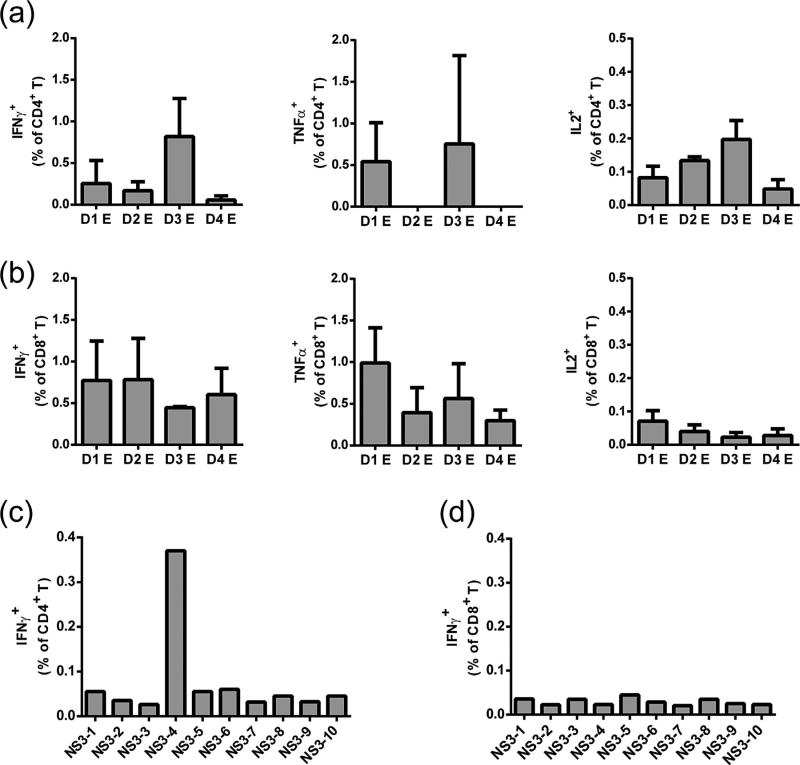Fig. 2.
T cell responses to DENV E and NS proteins. (a and b) CD4+ and CD8+ T cell responses to E proteins of each DENV serotype elicited after a single subcutaneous immunization with TDV. Immune splenocytes collected 6 weeks post-primary immunization were restimulated in vitro with pools of peptides encompassing the entire sequence of DENV-1–4 E (each pool consisted of the entire peptide array for a given E protein). Cells were stained for surface markers CD4, CD8 and intracellular cytokines (IFNγ, IL-2 or TNF-α). Samples were analyzed by flow cytometry (FACS Calibur). The percentage of cytokine producing cells in medium treated groups was subtracted from each sample. Data are presented as mean ± SD (n = 3). T cells derived from control FTA group did not produce any significant cytokine response above the medium background (data not shown). Peptide arrays representing the entire sequence of E protein for each serotype and NS3 protein of DENV-4 were obtained through the NIH Biodefense and Emerging Infections Research Resources Repository, NIAID, NIH (http://www.beiresources.org/). For E peptide arrays: Dengue virus type 1, Singapore/S275/1990, NR-4551; Dengue virus type 2, New Guinea C (NGC), NR5-7; Dengue virus type 3, Sleman/1978, NR-511; Dengue type 4, Dominica/814669/1981, NR-512. (c and d) CD4+ and CD8+ T cell responses to the NS3 protein of DENV-4. Immune splenocytes collected seven weeks post-primary immunization with TDV-4 were restimulated in vitro with pools of peptides (10 peptides/pool) encompassing the entire sequence of DENV-4 NS3 protein. Cells were stained for surface markers CD4, CD8 and intracellular cytokines (IFNγ). Samples were analyzed by flow cytometry (FACS Calibur). The percentage of cytokine producing cells in medium treated groups was subtracted from each sample. Data are presented as mean of two individual mice.

